Baking basics
Jan 10, 2012, Updated Jan 02, 2015
This post may contain affiliate links. Please read our disclosure policy.
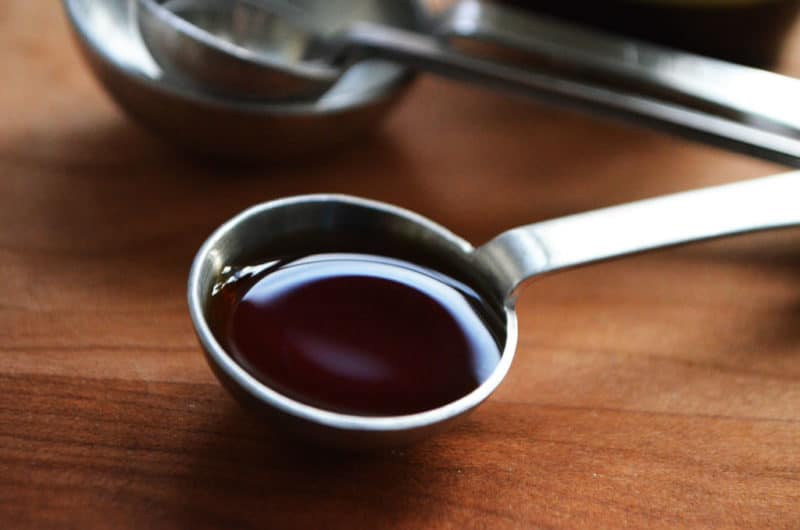
I’m reminded all of the time how important the little things are in life. Last week at a funeral, I observed the loving touch of the family who lost their mother and grandmother, husbands gently rubbing their wives’ shoulders and wives rubbing their childrens’ shoulders in turn. It was like watching the sign-language of love.
Perhaps my affinity for baking has to do with all of the little things that count to make a delicious outcome. In culinary school I came to appreciate how important each small step can be. My m.o. before then was to bake in haste, trying to get to the finish line as quickly as possible. I’m still learning to slow it down so I can give the details their due. Once that happens you can actually speed back up again because certain techniques are simply ingrained. On New Year’s Eve, I left simple syrup on the stove while I went off to do something else, and did it burn baby burn. My sister brought the Bible over and made me swear I would not do that ever again (she’s witnessed such behavior before, I’m afraid), reminding me that this is precisely how Aunt Louise’s house burned down.
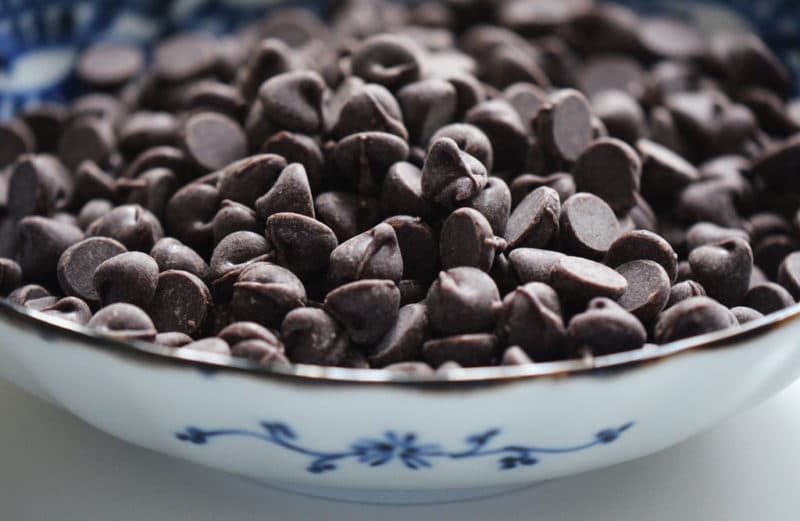
Here are a few baking basics to keep in mind—not only do they remind us that the little things count in all facets of life, but also they’ll make the cookies we’re baking this week (chocolate chip, if you must know, for reasons to be discussed next time…) that much more delicious.
1. Read the recipe entirely before you begin. It’s like having a general road map in your mind of where you’re headed before pulling out of the driveway. There’s no recipe GPS, so it’s best to take a look before you cook.
2. Gather ingredients on the counter. This is mise en place, ‘everything in its place,’ and a great way to ensure an ingredient is not missed. I recall a custard pie one Thanksgiving that turned out like quiche because Maureenie forgot the sugar. Having your ingredients at hand also allows you to stay with your process, like making simple syrup or mixing the batter, without running off to find what’s added next.
3. Measure ingredients away from the bowl. Measuring salt or vanilla can incur spills and over-pour…if they’re measured over your bowl of batter, the excess goes in and can ruin the mix.
4. Bring certain ingredients to room temperature. Baking often requires butter to be soft and eggs room temperature, so that they can beat up fluffy or incorporate properly. Butter is soft when pliable, bendable (not melty). If you haven’t thought ahead to place the butter on the counter (or if your room temperature is too cold to soften the butter, as it is here in Harbor Springs), you can soften the butter swiftly by cutting it into 1” pieces and setting it near a warm stove/oven. Or microwave the cut-up butter on lowest power for 10 second intervals. Bring eggs to room temp quickly by immersing them in a bowl of very warm water for about 5 minutes.
5. For baking, when possible, weigh ingredients like flour. Various measuring techniques can alter the amount, which can in turn very much change the outcome of, for example, the texture of a cookie or cake. I love my little Salter scale and use it frequently. If flour is not weighed, the best measurement technique is to scoop the flour into the measuring cup with a large spoon, then level off the top with the spoon handle or a butter knife. Never pack flour, as you might brown sugar, into the measure.
6. This will sound like a sacrilege, but it’s best not to eat too much of a hot baked good right from the oven (exception: baklawa). It’s still baking, in effect, as it cools down. Chef Frances often told us that hot bread eaten too soon from the oven can be a bad thing on the tummy. Also, baked goods are actually much more flavorful when they are cooler. Better to cool the cookie, then warm it back up a bit if you want some chocolate gooey goodness.
Chocolate gooey goodness, here we come.

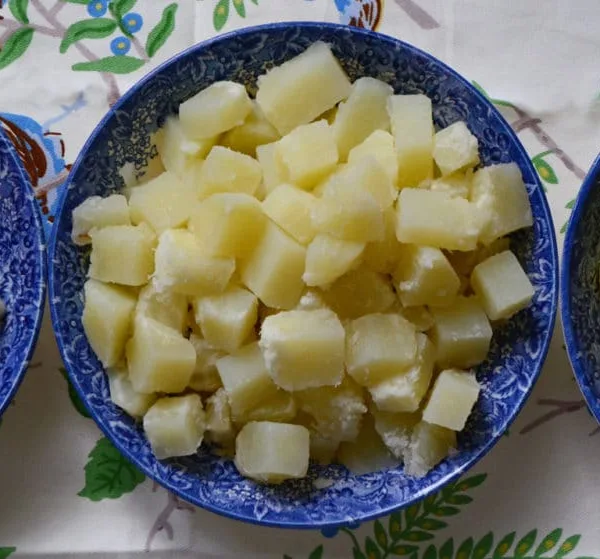
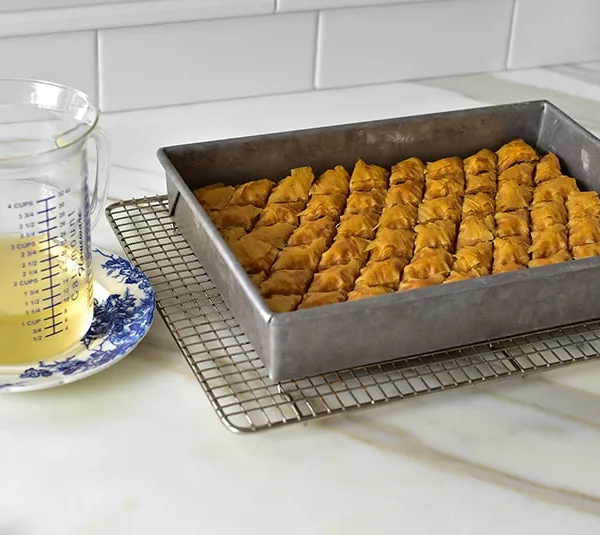
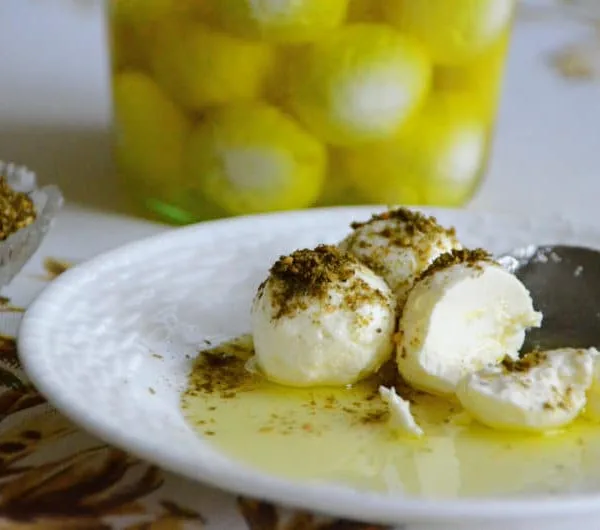






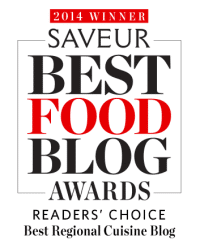
So disappointed! You’re absolutely correct to say that weighing ingredients is the only way to guarantee that proportions are correct and can be replicated every time… yet nowhere in your talami bread recipes is there a single measurement by weight! You have 4 cups of flour… how much does 4 cups of flour weigh? Could you please provide metric measurements for your garlic talami bread and at least a cheat sheet with metric weights of ingredients so that your recipes can be converted correctly? Thanks.
Hi Jo–with bread baking the scale is less important (though much easier than measuring) than in cake, cookie, and other pastry baking. What were your problems with the talami? Maybe I can help. The garlic butter glazed talami recipe requires a stand mixer and a long knead time there because of the high level of hydration. Thank you for your suggestion about adding metric measurements.
Your checklist is absolutely right, you don’t know how many times I realized I had forgotten something when I was ready to put it in the over or even later…grrrr!
The fact of weighing ingredients may sound odd to many continental europeans who are accustomed to grams, liters and so on, but I see that still so many American or British recipes come by “volume” (cups, tablespoons, etc.) which are fairly flexible in terms of precision, although sometimes I am using tablespoons myself as I’ve learned that a heaped tablespoon of sugar (at least the tablespoons in my kitchen…) weighs precisely 25 grams so 4 of them will make 100 grams, 1-2 gram more or less that won’t change much the result.
Flour instead is a different beast because it tends to behave very differently depending on humidity and density, so weighing it by spoons will lead to results that are difficult to repeat exactly.
Cheers
Tlaz
Hi Tiaz! Thanks for your great comment. I agree that using volume measures for many ingredients doesn’t get you too far astray. Flour is the biggie, without a doubt! It can be a pain to convert volume measures but a little cheat sheet in the kitchen helps, and then once you’ve done it a few times it’s ingrained in the mind. Happy baking!
I’ve been hunting for a good kitchen scale for a while, but the link for your Salter scale is broken and a search of Sur La Table returns quite a few options. Which model do you have? I’m hoping a good scale will improve my baking forays as I’m used to baking in northern Michigan (Cheboygan), but recently transplanted to southern California (San Diego) and flour just doesn’t behave quite the same here!
I so miss the delicious Lebanese food in Michigan. It’s the first and last thing we eat when we head back to visit family! My hubby and I are both looking forward to replicating as much as possible at home (one of our first realizations that our relationship would work was that we both had sumac in our kitchen cupboards!).
Hello Meg–looks like my scale isn’t available anymore, but if I bought a new one now, it would be this. I love your sumac story!! Happy cooking out in beautiful southern California, and warm regards from Michigan!
THANK YOU VERY MUCH FOR GREAT WORK!!!!!
Thank you very much for joining me here!
Maureen
In the same story, you make me tear up, AND, you make me laugh, and, of course, you always illuminate in the process.
Never, ever stop writing, teaching, or loving life!
Yes!! Thank you so much Diane!